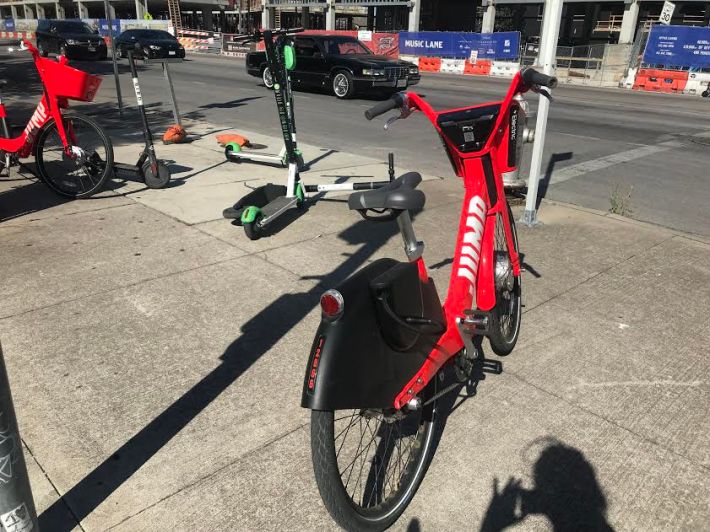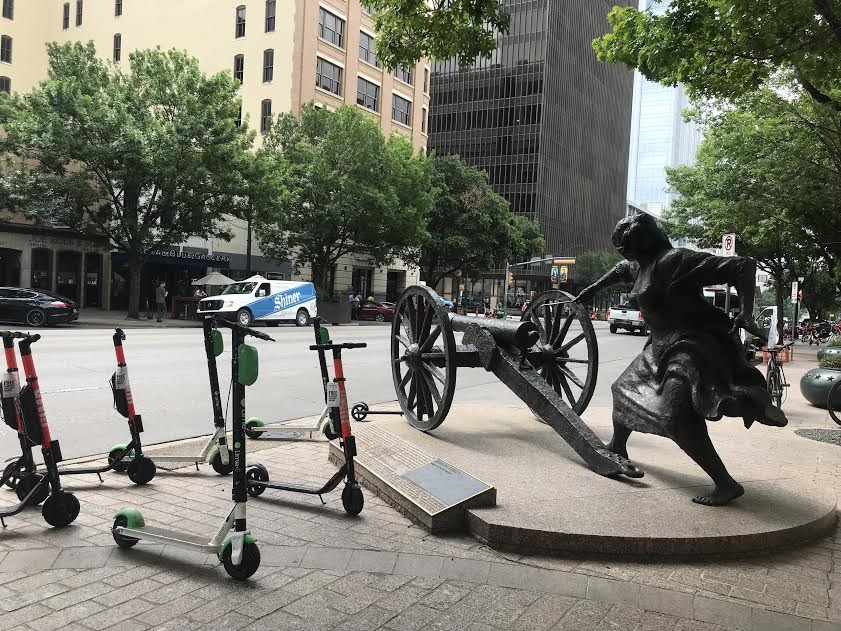This past week, I traveled to Austin, Texas for the TransitCenter foundation’s Women Changing Transit mentorship program. On the bus ride to my hotel near downtown Austin, I noticed the proliferation of dockless electric scooters, particularly on South Congress Avenue, a busy retail district.
I had seen scooters in other cities, most recently in Los Angeles. Multiple dockless mobility service providers are licensed to operate in downtown Austin’s project coordination zone. Supplemental licenses are also granted to deploy additional vehicles outside of the zone. The biggest operators in the city are Bird and Lime. Bird operates 1,000 scooters downtown and 4,000 outside of the zone, and Lime operates 500 scooters downtown and 4,500 elsewhere in the city.
I always try to view new transportation forms through the lens of safety, access, and mobility. I keep in mind that, as a visitor to a city, you don’t always get the big picture. From walking a few miles along South Congress into downtown Austin and near the University of Texas at Austin, I was surprised by how many scooters were being used and, in general, how neatly they were lined on sidewalks in the “street furniture zone” near the curb. I seldom saw scooters toppled over or obstructing foot traffic.

People rode scooters on both the streets and sidewalks. The ones I observed on the sidewalk seemed to slow down as they encountered pedestrians. In general, I didn’t feel unsafe while sharing the sidewalk with scooter riders. However, at night, the scooter users seemed to be a bit less careful about watching their speed on the sidewalk, probably because fewer pedestrians were around.
While Austin hasn’t had scooters for very long, there’s no denying that they’ve caught on in certain areas of the city. According to data shared with the Austin Transportation Department from April 5 to Dec 31, 2019, the overwhelming share of rides started in Central Austin’s District 9, which includes downtown Austin and the UT Austin campaign. That jibes with what I saw during my visit. More than 1.7 million riders started in that district, over 76 percent of all the rides during that period. District 3 in East Austin was the second highest use area. It is clear that there’s a market for scooters, although so far it’s overwhelmingly in younger, wealthier parts of Austin.
Scooters haven’t come without controversies, as is to be expected. A new study conducted by the Public Health and Transportation departments in Austin, in collaboration with the Centers for Disease Control and Prevention identified a total of 271 people who suffered scooter-related injuries from September 5 through November 30, 2018. The research team determined that there were 20 individuals injured per 100,000 scooter trips during that three-month period.
Earlier this year, electric scooters also took center-stage at the South by Southwest conference, with some complaining about congestion and safety issues. Just this week, the Texas Senate passed a bill that would prohibit riding electric scooters on the sidewalks and would require that scooter users be at least 16 years old. The bill now moves to the House for consideration.
I think it’s important to consider ways to make scooters safer and to think about appropriate rules, particularly when they’re such a new technology. As Chicago gets ready to launch a four-month scooter pilot on June 15, I am open to seeing how scooters can serve our communities, particularly if they can replace car trips, and improve transportation access in communities located far from downtown and wealthier areas. Since the pilot focuses on the West and Northwest Side, including ethnically and economically diverse neighborhoods with varying levels of CTA service and Divvy station coverage, it will be a good opportunity the gauge the potential of this new technology.






